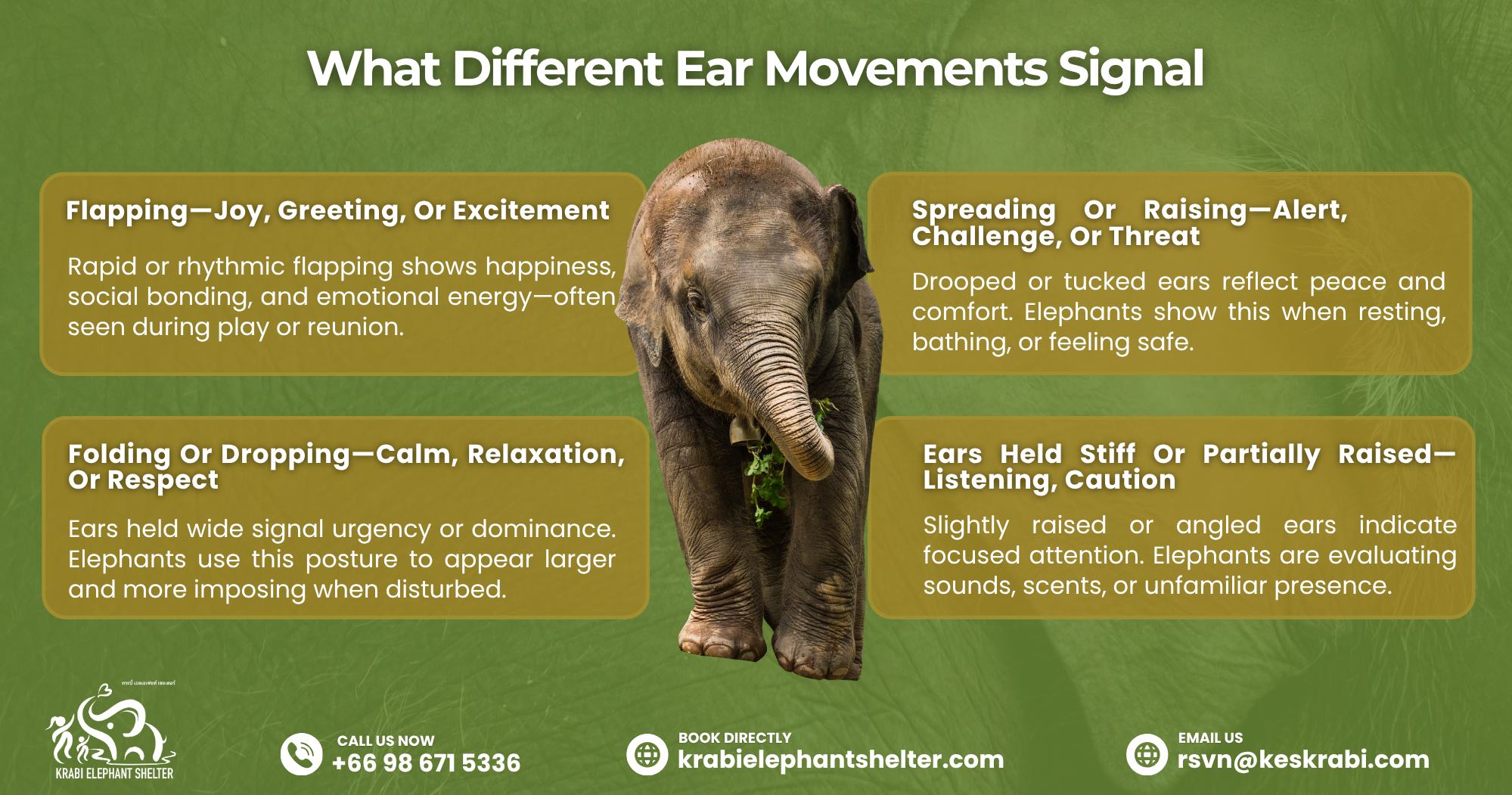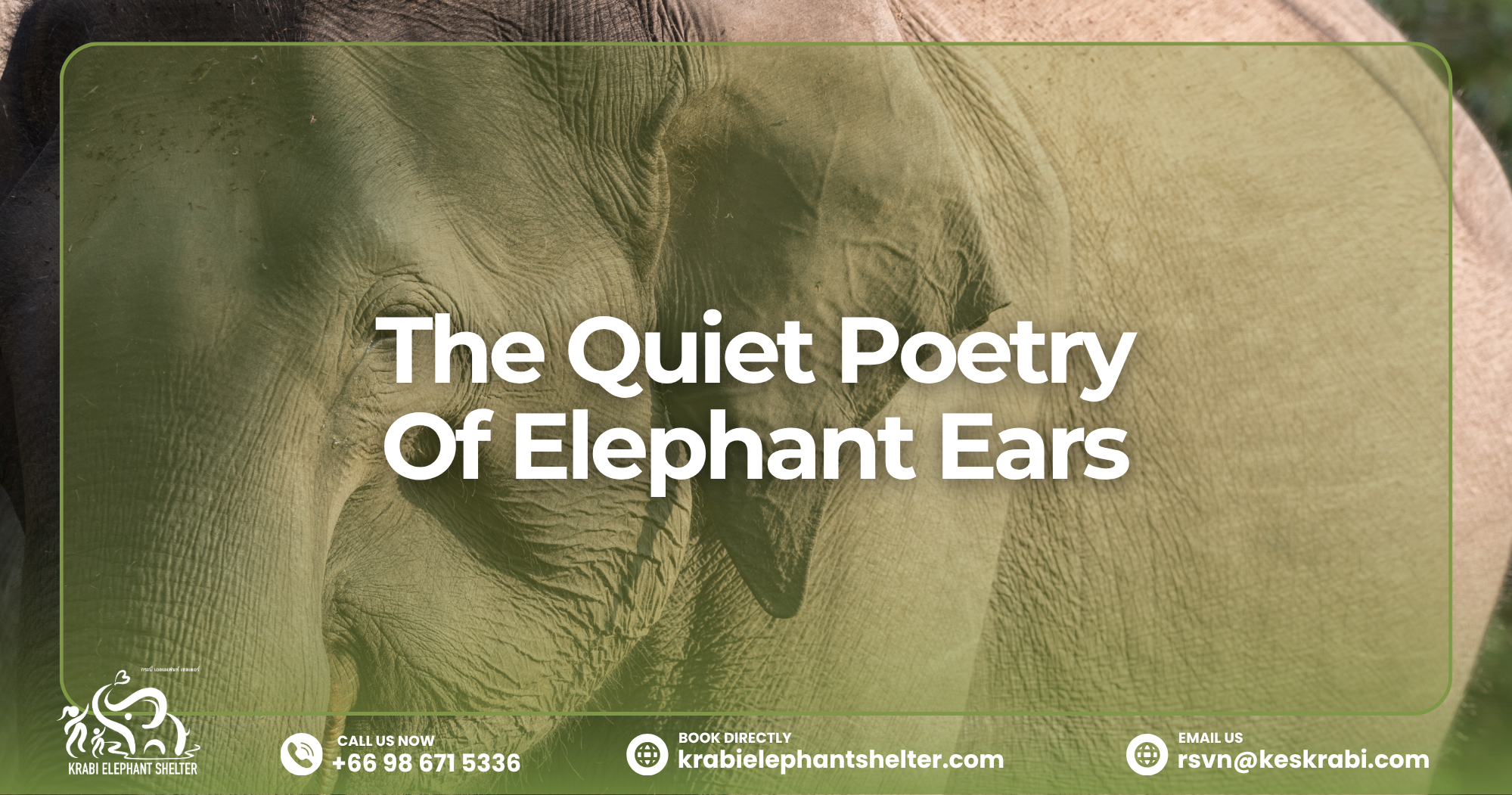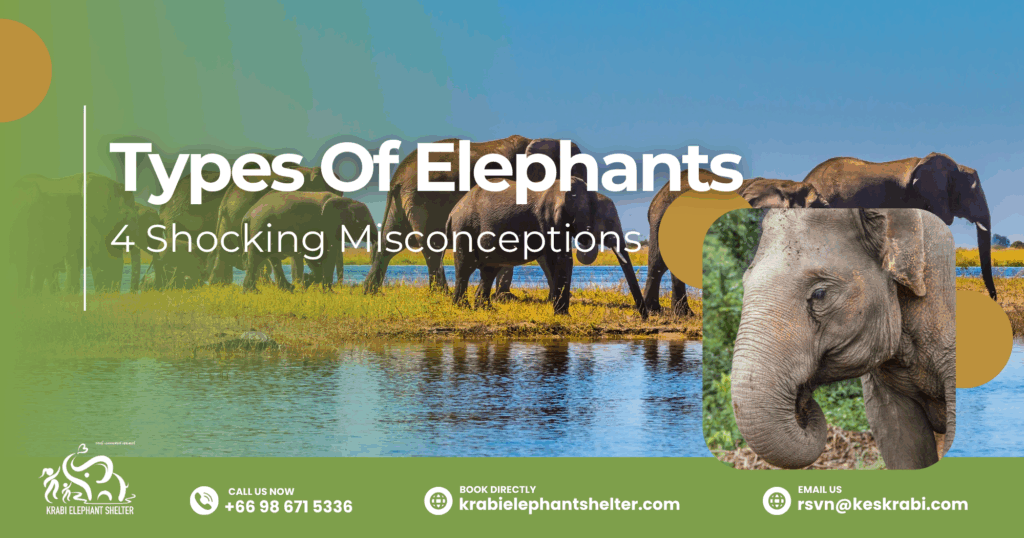During the silent pre-dawn hour in the woods, an elephant is unfolding his massive ears; without uttering a single note, he is talking. Even with our poor human senses, if we listen, we may start hearing what its ears are saying.
In Krabi Elephant Shelter, each of the elephants is regarded with dignity and given the freedom to express himself. We have learned to pay close attention and to read the language of the elephant ears, small and exquisite, as one reads a book. These non-verbal gestures allow the elephant to communicate peace, curiosity, and connection, and they serve to remind us that we might not always find something to say, but we can usually find something to understand, that is, in silence.
We will discover in this blog how the use of the elephant ears as an instrument of emotion and communication. You will know why they flap, spread, drop, or fold—and what every movement may portend to the elephant and his friends.
The Power Of Silence—Why Ears Matter
Words play a crucial role when we communicate as humans. Elephants, conversely, tend to be visual and motion pictures. Their grunts and tremors are unbelievable. And yet, occasionally, the most eloquent words belong not to sound, but to gesture. One of the most eloquent instruments that elephants use is their ears.
Since the ears of the elephant are big, apparent, and relatively movable, they enhance minor changes of mood, will, or wakefulness. Ear reading will take you nearer to the emotional world of these gentle giants, to a sensitive observer, a mahout, a sanctuary caretaker, or any sensitive observer.
What Different Ear Movements Signal
Below, we discuss the most popular ear behaviors and the message they can convey. You are reading with a picture of Krabi Elephant Shelter in your mind—of elephants no longer chained and no longer forced to work. These elephants are now allowed to be more of themselves.
1. Flapping—Joy, Greeting, Or Excitement
Nothing could be happier than to see an elephant fluttering his ears with great vigor. The flapping is usually rapid or rhythmic and can be seen during times of reunion, greeting, or play. It is almost as though the elephant were saying, “I am here!” or “I’m excited to see you!”
Elephants can use their ears both to cool themselves and to express emotions to their herd. The swinging of their ears signifies love and social attachment, serving as a way to express joy in togetherness and friendship.
We have witnessed at our sanctuary the flapping of the ears of the elephants upon approaching known friends or when about to feed. It is not merely a question of chilling the blood, although this is also thermoregulatory, but it is emotional, full of life.
2. Spreading Or Raising—Alert, Challenge, Or Threat
An elephant can raise its ears and make them wide when it feels something urgent, when there is a potential threat to it, when a certain sound catches its attention, or when a strange presence appears. This makes the size and appearance of the elephant more imposing. It’s a visual assertion: “Stop. Take me seriously.”
Elephants can add this up with head lifts, trunk swings, dust-throwing, or ear snapping to make the show look more impressive. When something strange happens, a far motor or a strange animal rustling starts to disturb the whole herd of elephants at the shelter. Their ears are occasionally dilated and held rigid. Listening to such moments makes us recollect how sensitive we are to their surroundings.
3. Folding Or Dropping—Calm, Relaxation, Or Respect
As the threat is gone or the elephant is resting, the elephant’s ears can either be folded slightly or be positioned near the body. This is a sign of relaxation, reliability, or satisfaction. As human beings tend to drop their shoulders when they lose stress, so elephants tend to drop their ear posture when in a secure condition.
At Krabi, when we have bathed or have been taking a leisurely rest, we can frequently see their ears puckered in, the fadedness of the flaps, and the relaxed ease of the body language.
4. Ears Held Stiff Or Partially Raised—Listening, Caution
At times, the ears do not open up or hang down; the ears are tilted, stiff, or twisted. This is one of the hints that the elephant is not only listening but also evaluating or alert, but not yet in alarm. It’s a “wait-and-see” posture.
The elephant may turn its ear cups in order to hear far away or the slightest odor. When individuals in the shelter come near the elephants to offer them something to eat or do, the elephants tend to redirect their ears first, a point of expectant silence.
Why This Matters At Krabi Elephant Shelter
By visiting an elephant sanctuary, particularly one that adheres to ethical and respectful treatment. There is an easy method of observing and communicating with elephants based on the movements of their ears. You should move slowly and make sure you approach the elephant to enable it to be aware of you and get used to you.
Note their stance and whether their ears are flat, flapping, or raised partially, and observe indications of their eyes, trunk, and tail. Sudden changes in the turn of their ears into a folded or their passive into an alert position are often indicative of emotional changes.
Never forget about the context of the moment. The ear motions are consistent with what is going on around them. Whether it is time to eat, someone new has arrived, or a strange sound is in the distance. And most of all, respect the signs. Each flick, fold, or flare of an elephant’s ears tells a story that blends instinct, emotion, and awareness. Observing these gestures with care allows us to understand their mood and respond appropriately. When we learn to read these signs, we participate in a quiet conversation built on empathy rather than dominance. Respecting their language is not just about safety—it’s about honoring the intelligence and sensitivity that make elephants truly extraordinary.
When the ears of an elephant are stiff or on guard for a long time, or when it turns its back, then you know you had better give it room. This kind of observation of the elephants is some sort of window into their emotional world, which is narrated by every move of the ears.
The Quiet Poetry Of Elephant Ears
Silence is one of the things that we usually underestimate in our modern world. In the case of elephants, however, silence, coupled with gesture, is a language of multifacetedness. Elephant ears are not passive members; they are communicative canvases, full of meaning.
We propose not only visiting elephants but, even more, listening to them with your eyes and your attention and your heart at Krabi Elephant Shelter. You can see more than movement when you see an elephant gradually jerk the ears in a very still morning, or when he unfolds the ears and looks like a fan in the evening. You are experiencing feelings, interactions, and relationships.
And when you have been there and have felt that tickling of ears when they are so near you, or have ever encountered a moment of their fluttering that touched your heart, we beg you to go again, and watch them, and have the language of the elephant ears speak to you.
Make your reservation for the Krabi Elephant Shelter right away!
When you go to Krabi Elephant Shelter, the money you pay to get in goes directly to taking care of the elephants, including their food, medical care, and keeping their home clean. You can make your trip worthwhile by helping to protect animals in the long term while also having a once-in-a-lifetime experience with Thailand’s most famous giants.
Call us at (+66) 98 671 5336 or email us at [email protected]
You can book directly at krabielephantshelter.com





